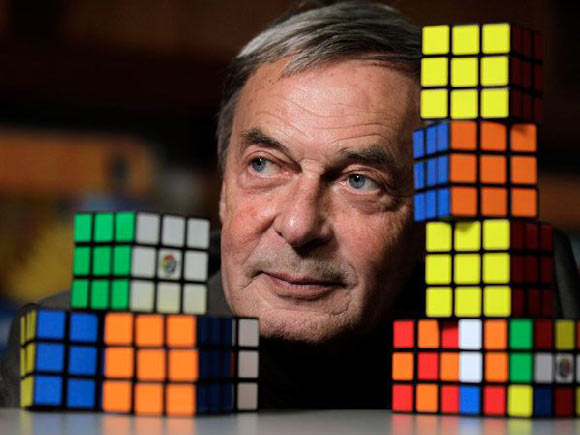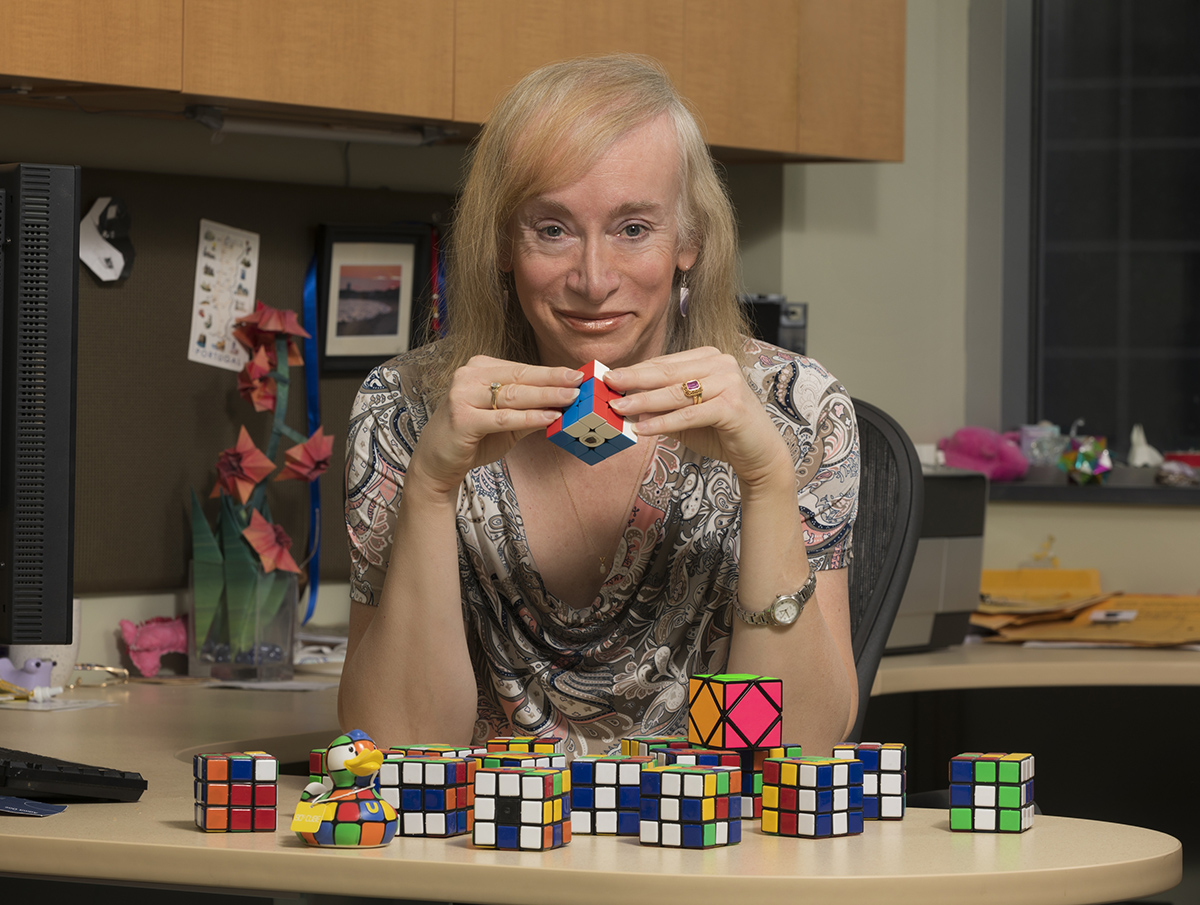History
Erno Rubik is the one to praise or to blame, depending on how mad the Rubik's Cube has driven you. Born on July 13, 1944 in Budapest, Hungary, Rubik combined the divergent talents of his parents (his father was an engineer who designed gliders and his mother was an artist and a poetess) to become both a sculptor and an architect.

Fascinated with the concept of space, Rubik spent his free time while working as a professor at the Academy of Applied Arts and Design in Budapest designing puzzles that would open his students' minds to new ways of thinking about three-dimensional geometry.
In the spring of 1974, just shy of his 30th birthday, Rubik envisioned a small cube, with each side constructed of moveable squares. By the fall of 1974, his friends had helped him create the first wooden model of his idea.
At first, Rubik just enjoyed watching how the squares moved as he turned one section and then another. However, when he attempted to put the colors back again, he ran into difficulty. Oddly entranced by the challenge, Rubik spent a month turning the cube this way and that way until he finally realigned the colors.
When he handed other people the cube and they too had the same fascinated reaction, he realized he might have a toy puzzle on his hands that could really be worth some money.
The invention, eventually renamed the Rubik's Cube, would become the most popular puzzle toy in the world, with more than 350 million sold as of 2018. The cube also inspired numerous artworks and films, and spawned a competitive sport called speedcubing that fills arenas with teenagers racing to complete the puzzle in the shortest amount of time.
Speedsolving the Rubik's Cube

When talking about the advanced technique of solving the Rubik's Cube we have to mention the Petrus system and the Fridrich method, which is used by the big majority of speedcubers these days. CFOP is a 3x3 speedsolving method proposed by several cubers around 1981, which stands for Cross, First 2 Layers (F2L), Orientation of Last Layer (OLL), and Permuatation of Last Layer (PLL). It is also known as the Fridrich Method after its popularizer, Jessica Fridrich. The method involves memorizing a lot of algorithms, but there is a logical connection between them. After a lot of practice you will develop the ability to execute these operations intuitively.In part due to Fridrich's publication of the method on her website in 1995, CFOP has been the most dominant 3x3 speedcubing method since around 2000, with it and its variants used by the vast majority of the top speedcubers such as Feliks Zemdegs, Max Park, Sebastian Weyer, Mats Valk, etc. It is the method used by all 3x3 world record holders in the last decade.
CFOP Method
The CFOP Method has a total of 120 algorithms. There are 42 cases for the F2L step, 57 cases for the OLL step, and 21 cases for the PLL step. All of the algroithms can be found on the speedsolving wikipedia page.
- Cross: The first step is to make a cross on the bottom face by solving four edge pieces that share one color
- F2L (First Two Layers): In between the solved cross edges and their corresponding centers are four slots that contains a corner and an edge piece. The goal of this step is to fill in these slots with the right pieces to solve the first two layers at the same time. This is accomplished by pairing up a corner that shares a color with the cross, and an edge that shares its colors with said corner, then inserting them together. The completion of this step leaves one with just the last layer, typically placed on top.
- OLL (Orientation of the Last Layer): In this step, the goal is to make the top face one color. There are 57 nontrivial cases, and therefore 57 algorithms to learn for this step
- PLL (Permuation of the Last Layer): Finally, the cube is solved by permuting the pieces of the last layer, in other words putting them in the correct position. There are 21 nontrivial cases for this step.